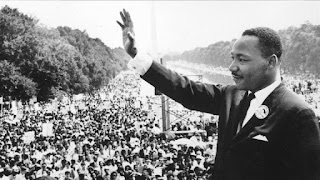Brown v. Board of Education
Summary: 1950's America featured jarringly separate and unequal black and white schools. Black schools were often very inferior to white schools, and the segregated aspect of schooling made life hard for many black students. Oliver Brown, a black father of a girl in segregated schools, went to the Topeka NAACP branch for help in challenging school segregation laws in court. At first the local Judge seemed to be in favor of Brown's case, however he eventually was forced to side with the Board of Education, based on precedents set by Plessy v. Ferguson. Combined with other similar cases, Brown then appealed to the Supreme Court, where it was finally decided that school segregation was inherently unequal. This action began the rolling back of school segregation laws, and overturned the ruling of the infamous Plessy v. Ferguson.
(In the next decade, the civil rights movement lead by enigmatic colored men such as MLK Jr. and Malcolm X, would focus on bringing down the rest of segregation, and eliminating the state of blacks as "second-class" citizens in the US).























